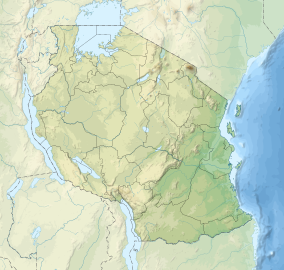| Selous Game Reserve | |
|---|---|
IUCN category IV (habitat/species management area) | |
 Elephants in the Selous Game Reserve | |
| Location | Tanzania |
| Coordinates | 9°0′S 37°24′E / 9.000°S 37.400°E |
| Area | 54,600 km2 (21,100 sq mi) |
| Established | 1922 |
| Type | Natural |
| Criteria | ix, x |
| Designated | 1982 (6th session) |
| Reference no. | 199bis |
| Region | Africa |
| Endangered | 2014-present[1][2] |
The Selous Game Reserve, now renamed as Nyerere National Park (in-part), is a protected nature reserve and wilderness area in southern Tanzania, East Africa. It covers a total area of 50,000 km2 (19,000 sq mi), with additional buffer zones, as well. It was designated a UNESCO World Heritage Site in 1982, owing to its high levels of biodiversity and vast, undisturbed natural landscapes, such as the grasslands and the miombo woodlands habitat. Among the numerous species within the park are some of the continent's largest and most iconic (and most vulnerable, threatened or endangered), such as the bush elephant, black rhinoceros, hippopotamus, lion, leopard, spotted hyena, painted dog, Cape buffalo, Masai giraffe, plains zebra, white-bearded gnu and the giant Nile crocodile. Due to the fragility and sensitivity of the many species and ecosystems within the park, human habitation is not permitted within its bounds, and all persons entering and exiting are tallied and tracked by the Wildlife Division of the Tanzanian Ministry of Natural Resources and Tourism.
- ^ "Selous Game Reserve". UNESCO World Heritage Centre. Retrieved 2023-01-05.
- ^ "Elephants could disappear from Tanzania World Heritage site within six years". WWF. Retrieved 2023-01-05.
